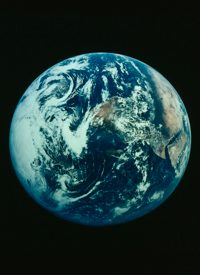
This turn of events — significant warming in the pre-industrial period that corrected itself — would seem to present a problem for the theory of manmade global warming, which asserts that the Earth’s present alleged warming trend is primarily, if not solely, the result of human activity, specifically carbon dioxide emissions, and that it cannot be stopped absent a return to a pre-industrial world.
Global-warming believers such as the Intergovernmental Panel on Climate Change (IPCC) have circumvented the inconvenient truths of MWP and LIA by claiming that both were strictly local events not reflective of global climate in general. Thus, they can then argue that carbon emissions, not cyclical climate changes, are the cause of the current, supposedly unprecedented phenomenon of rising global temperatures.
Not anymore. A team of scientists led by Syracuse University geochemist Zunli Lu has discovered that the MWP and LIA reached all the way to Antarctica — in other words, over the entire world. By studying the types of oxygen isotopes trapped in ikaite, a rare mineral composed of calcium carbonate and water that forms in cold water, they were able to determine that the same periods of warming and cooling occurred in the Antarctic as occurred in the far North.
“Ikaite is an icy version of limestone,” Lu explained in a university press release. “The crystals are only stable under cold conditions and actually melt at room temperature.”
Since the crystals have remained intact in the frigid climate of the South Pole for thousands of years, Lu’s team of researchers was able to obtain them from sediment cores drilled off the coast of Antarctica. They paid particular attention to those layers deposited during the MWP and LIA.
The press release describes the research process and results:
Ikaite crystals incorporate ocean bottom water into their structure as they form. During cooling periods, when ice sheets are expanding, ocean bottom water accumulates heavy oxygen isotopes (oxygen 18). When glaciers melt, fresh water, enriched in light oxygen isotopes (oxygen 16), mixes with the bottom water. The scientists analyzed the ratio of the oxygen isotopes in the hydration water and in the calcium carbonate. They compared the results with climate conditions established in Northern Europe across a 2,000-year time frame. They found a direct correlation between the rise and fall of oxygen 18 in the crystals and the documented warming and cooling periods.
“This ikaite record qualitatively supports that both the Medieval Warm Period and Little Ice Age extended to the Antarctic Peninsula,” wrote Lu and colleagues in a summary of their research as presented in the peer-reviewed journal Earth and Planetary Science Letters.
Global warming, therefore, has occurred in the past when there were no human carbon emissions outside of exhaled breaths. What’s more, it did not result in the end of the world as we know it, and it corrected — or, depending on one’s preference for warm weather, overcorrected — itself. This, observed Lewis Page of the Register, “would strongly suggest that global warming may just be something that happens from time to time, not something caused by miniscule [sic] concentrations of CO2 (the atmosphere is 0.04 percent CO2 right now; this figure might climb to 0.07 percent in the medium term).”
Of course, it is possible that the present warming trend — assuming there is one and it hasn’t stopped already — is a new phenomenon generated by human activity. Lu’s study cannot speak to that. However, the fact that earlier, natural warming trends eventually petered out of their own accord suggests that the planet may have ways of regulating its own temperature. Even if humans were to cause worldwide temperatures to rise by a few degrees, it is well within the realm of possibility that the resulting effects — less ice but more plants and clouds — could counteract the higher temperatures.
Global warming has happened before, and it will probably happen again. When it has happened, temperatures have not skyrocketed; they have risen by a few degrees and then fallen again. Whether or not there is global warming now — and if so, whether or not it is driven by humans — there seems to be little cause for panic and even less cause for forfeiting our liberties and livelihoods to local, national, or global governments.


